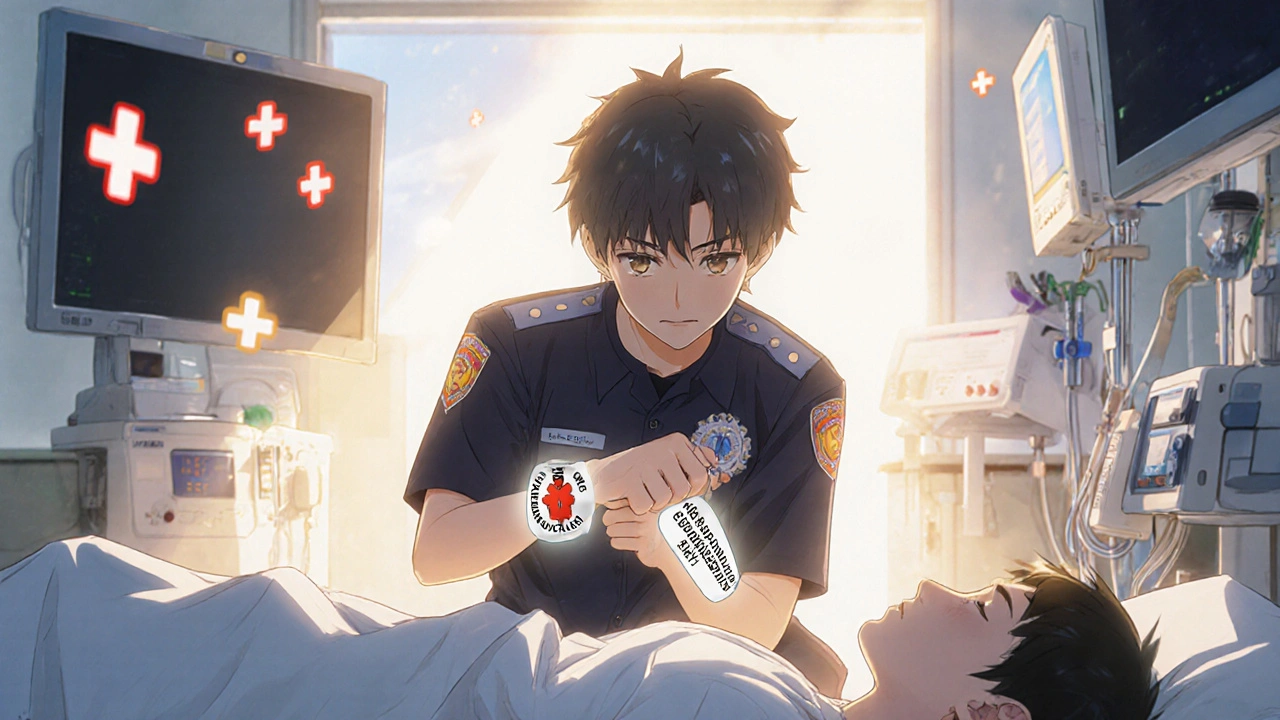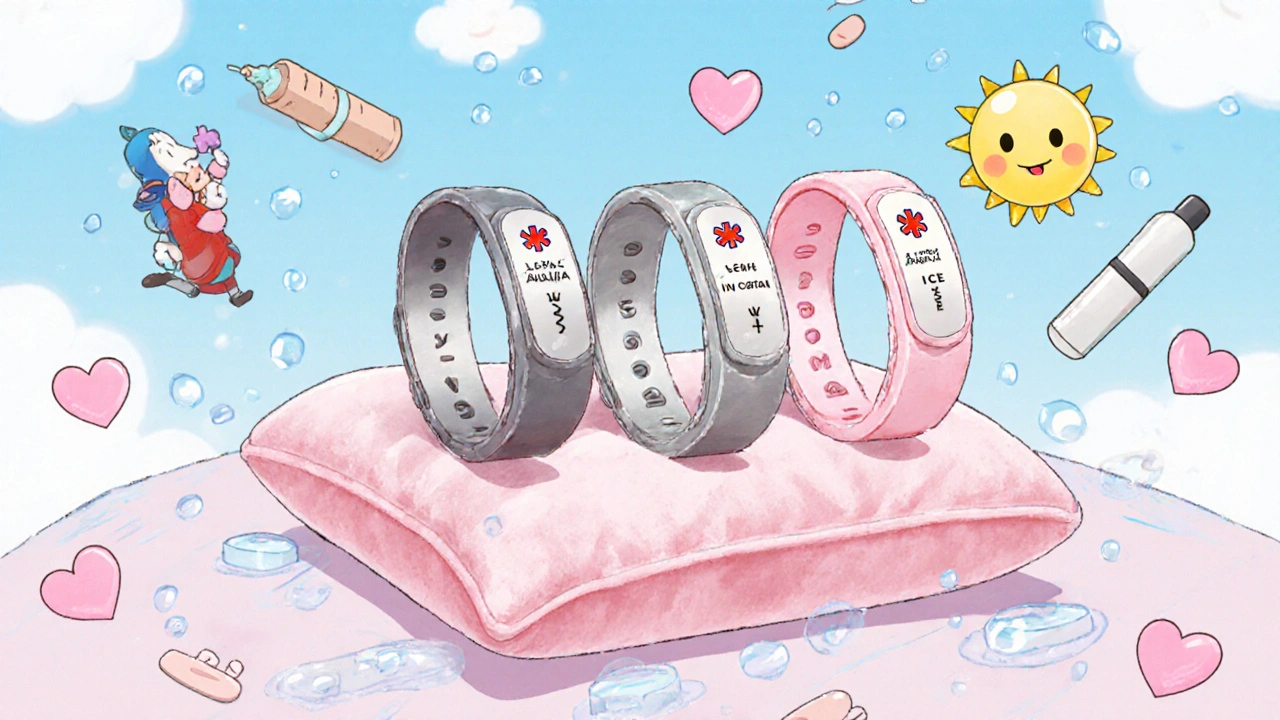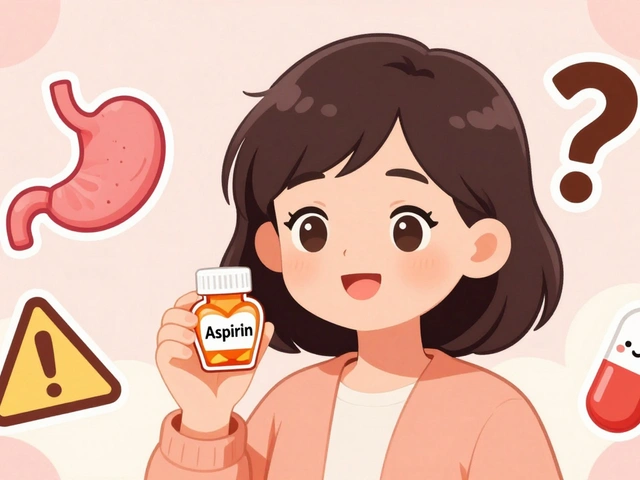If you have a severe drug allergy, wearing a medical alert bracelet isn’t just a good idea-it could save your life. Emergency responders don’t have time to guess what’s wrong when you’re unconscious. They need to know, instantly, what drugs could kill you. That’s where a properly worn and engraved medical alert bracelet comes in.
Why a Medical Alert Bracelet Matters
More than 95% of emergency medical professionals check for medical alert jewelry when they arrive at a scene. Of those, 95% look first at the wrist. A bracelet is the most reliable way to communicate your allergies when you can’t speak. Whether you’re allergic to penicillin, morphine, sulfa drugs, or any other medication, your body doesn’t care if you forgot to tell the nurse. Your bracelet does.In 2023, a patient in a Kaiser Permanente ER was confused from low blood sugar. They couldn’t explain they were allergic to cephalosporins. But their bracelet said: ALGYS: CEPHALOSPORIN. The ER team skipped dangerous antibiotics and chose a safe alternative. No anaphylaxis. No ICU. Just a quick, correct response.
What to Engrave on Your Medical Alert Bracelet
Space is limited. You need to fit the most critical info in as few characters as possible. Use standard medical abbreviations so first responders recognize them instantly.- Your name - So they know who they’re helping.
- Primary drug allergy - Use abbreviations: NO PCN for penicillin, NO MORPHINE, ALGYS: SULFA.
- Other drug allergies - List them after the main one: ALGYS: PCN, MORPHINE, SULFA.
- Epinephrine auto-injector - If you carry an EpiPen, write EPI PEN. This tells responders they can use it on you without hesitation.
- Emergency contacts - Label them ICE: ICE: MOM 555-0123.
Don’t write: “I am allergic to penicillin.” Too long. Don’t use vague terms like “antibiotic allergy.” Be specific. Penicillin is not the same as amoxicillin, and some people are only allergic to one.
Examples of effective engravings:
- CECILIA WONG | ALGYS: PCN, MORPHINE, SULFA | EPI PEN | ICE: DAD 555-0199
- NO PCN | NO CEPHALOSPORIN | EPI PEN | ICE: SIS 555-0244
Where to Wear It
Wear your bracelet on your dominant wrist. If you’re right-handed, wear it on your right wrist. That’s where paramedics check first. Don’t tuck it under your sleeve. Don’t wear it on your ankle. It won’t be seen fast enough.Necklaces are fine too-75% of responders check the neck-but bracelets are faster to spot during trauma. If you wear both, make sure they say the same thing. No contradictions.
Wear it 24/7. Even when you’re sleeping. Even when you’re showering. Most medical alert bracelets are waterproof and made from surgical steel, titanium, or medical-grade silicone. They won’t rust, break, or irritate your skin.

Choosing the Right Material
If you’re allergic to nickel, avoid cheap stainless steel. Look for:- Surgical steel - Hypoallergenic, durable, common choice.
- Titanium - Lightweight, extremely safe for sensitive skin.
- Medical-grade silicone - Flexible, comfortable, great for kids or active lifestyles.
Avoid plastic, leather, or fabric bands unless they have a metal insert with engraving. A printed label can fade. Engraving lasts.
Common Mistakes to Avoid
People make the same mistakes over and over. Don’t be one of them.- Using non-standard abbreviations - “Allergic to amoxicillin” might be written as “ALGY: AMOX” - but “AMOX” isn’t universally recognized. Use “NO PCN” instead.
- Not updating your bracelet - If you develop a new allergy, get a new bracelet. Outdated info is dangerous. One in three emergency miscommunications comes from old ID.
- Wearing it loosely - If it slips down your wrist, it’s hard to read. It should fit snugly but not cut off circulation.
- Assuming it’s enough - A bracelet isn’t a replacement for telling doctors. Always inform your pharmacist, dentist, and primary care provider. But when you’re passed out? The bracelet speaks for you.
Digital vs. Physical: Why the Bracelet Still Wins
You might think: “I have a health app. I can scan a QR code.” That’s great-but what if your phone is dead? What if it’s in your bag? What if you’re in a car crash and your phone is shattered?Medical alert bracelets work without power. No Wi-Fi. No battery. No login. Just metal or silicone with engraved letters. That’s why 87% of people with severe drug allergies still wear them-even with digital options available.
Some new bracelets now have NFC chips or QR codes. That’s a bonus. But the engraving is still the primary source. First responders aren’t pulling out phones to scan codes in the middle of a code blue. They look at your wrist. They read the metal.

Real Stories, Real Impact
On Reddit, user u/EpiPenSurvivor shared how their bracelet saved them during an appendectomy. They were under anesthesia. The surgical team almost gave them penicillin. But the nurse noticed the bracelet: NO PCN | EPI PEN. They switched antibiotics. No reaction. No complications.Another user in the UK had a severe reaction to morphine after a fall. Paramedics didn’t know their history. But their bracelet said ALGYS: MORPHINE. They used a different painkiller. They survived.
These aren’t rare cases. They’re routine.
How to Get One
You don’t need a prescription. You can buy one online from trusted brands like:- MedicAlert Foundation - Offers free membership with bracelet, digital profile, and 24/7 emergency hotline.
- American Medical ID - Custom engraving, 4.7/5 rating, 892+ reviews.
- Lauren’s Hope - Stylish designs, medical-grade materials, 4.8/5 rating.
Prices range from £20 to £80. Some insurance plans cover them as medical devices. Check with your provider.
When ordering, choose the engraving carefully. Double-check spelling. Confirm abbreviations. Ask for a proof before production.
Final Checklist
Before you wear it, make sure you’ve covered all the basics:- ✅ Your name is on it
- ✅ Primary drug allergy is clearly engraved (use abbreviations)
- ✅ Other drug allergies are listed
- ✅ “EPI PEN” is included if you carry one
- ✅ At least two ICE contacts are listed
- ✅ Made from hypoallergenic material (surgical steel, titanium, silicone)
- ✅ Worn on your dominant wrist, 24/7
- ✅ Updated if your allergies change
If you’ve checked all these, you’ve done everything you can to protect yourself when you can’t speak.
Can I just carry a card instead of wearing a bracelet?
No. Emergency responders don’t search pockets or wallets when someone is unconscious. A card can be lost, crushed, or forgotten. A bracelet is always visible on the wrist. Over 95% of paramedics check the wrist first. A card won’t help if you’re in a car crash or having a seizure.
What if I’m allergic to the bracelet material?
Choose medical-grade silicone or titanium. These materials are designed to be non-reactive, even for people with sensitive skin. Avoid cheap metals that contain nickel. Reputable brands list their materials clearly. If you’ve had skin reactions before, ask for a sample before buying.
Should I get a necklace or a bracelet?
Bracelets are more reliably found during emergencies. Ninety-five percent of responders check the wrist. Necklaces are checked 68% of the time. If you wear both, make sure they have identical information. But if you can only wear one, choose the bracelet.
Do I need to update my medical alert bracelet if I develop a new allergy?
Yes. Outdated information is dangerous. If you’re newly allergic to a drug, get a new bracelet. Don’t rely on memory. Emergency staff trust what’s engraved. If your bracelet says “NO PCN” but you’re now allergic to cephalosporins too, they might give you a dangerous drug by accident.
Are medical alert bracelets covered by insurance?
Some insurance plans, especially in the U.S., cover medical alert jewelry as a Class I medical device. In the UK, you may need to request it as a prescription item through your GP. Contact your insurer and ask if it’s covered under “durable medical equipment.”







Simone Wood
November 20, 2025My cousin got a bracelet after her anaphylaxis to sulfa drugs. She wears it every day, even to bed. Paramedics saved her life last year because the ER nurse saw it before the IV bag was even opened. No drama. No guesswork. Just metal telling them what to avoid. That’s all you need.